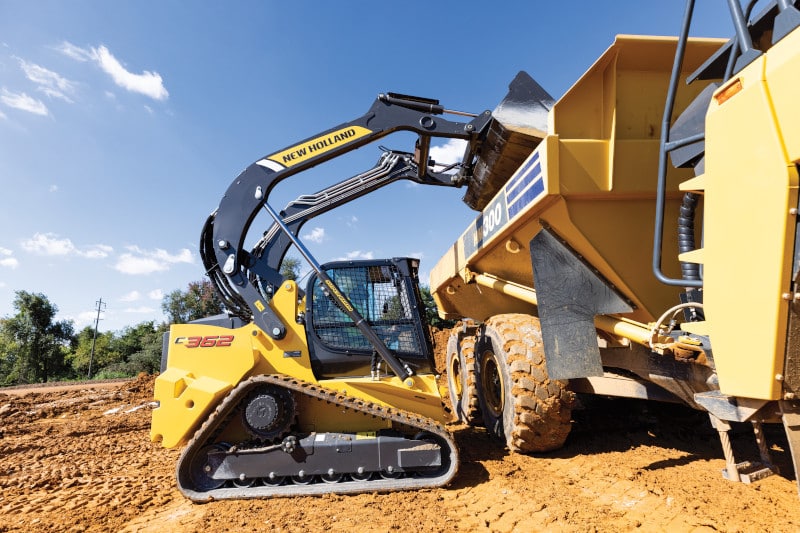JCB Compact Track Loaders — 2014 Spec Guide
While JCB entered the skid steer market in 1993, the company didn’t begin producing compact track loaders until 2001. In 2007, JCB launched the Series II skid steer and compact track loader product line. The compact track loaders were built with the same basic design as their skid steer counterparts, with the primary difference being the use of tracks instead of wheels. By the third quarter of 2010, JCB was producing three tracked machines. In November 2010, JCB launched its New Generation product line, which included large-platform skid steers and compact track loaders.
JCB expanded the product line in 2012 with the addition of small-platform skid steers and compact track loaders. In 2013, JCB announced that all large-platform skid steers and compact track loaders would be powered by the Tier 4 Final JCB Ecomax engine, using up to 9 percent less fuel over the previous Dieselmax engine. At CONEXPO 2014, JCB launched its Tier 4 Final small-platform skid steers and compact track loaders. These machines are powered by the all-new JCB diesel by Kohler Tier 4 engines.
Both the large and small platform models meet Tier 4 Final emissions standards without the need for any exhaust gas after-treatment, saving money on fuel, decreasing downtime and reducing whole-life service costs, says JCB.
Today, JCB’s New Generation product line includes four large-platform tracked models (the 225T, 260T, 300T and 320T) and three small-platform machines (the 150T, 190T and 205T) for a total of seven compact track loaders offering vertical or radial lift. These machines weigh from 1,500 to 3,200 lbs. JCB’s compact track loaders mimic the company’s skid steer loaders, using a single-arm PowerBoom to enhance operator safety and visibility. Visibility that’s 60 percent better than that offered by competing compact track loaders, says JCB. Operators never have to exit or enter the machine over a cumbersome attachment or an unsupported boom due to the presence of a left-side entry door.
JCB compact track loaders share the vast majority of their features with the company’s skid steer models, including larger cabs, suspension seats, servo controls, sealed and pressurized cabs and good serviceability. These machines are not only easy and comfortable to operate, they also present owners with the lowest operating costs in the industry and 16 percent better fuel economy, according to JCB. Because compact track loaders have a lower center of gravity than their wheeled skid steer counterparts, they are generally more stable, making them an excellent choice for operators of all skill levels.
Advice to Buyers
“Contractors should consider the absolute heaviest load the machine will have to handle at any point during the job,” says Ashby Graham, product specialist for JCB. “Then, they should choose a machine that can effectively manage that load based on ROC. A machine can always pick up a lighter load than the one for which it’s rated. But if you try to pick up a load that’s too heavy for a particular machine, the CTL can become unstable and unsafe. Choosing a correctly-sized CTL is important for operators to be more productive. Upsizing to a larger machine allows operators to carry heavier loads — more material at once — and run larger attachments. This leads to jobs being completed faster. Contractors who can perform jobs in less time can contract for more jobs overall, ultimately leading to greater profits. Before deciding to upsize to a larger machine, contractors should also consider their towing limits and jobsite limitations. A larger machine may require a contractor to invest in a dedicated trailer to haul it from jobsite to jobsite.”





